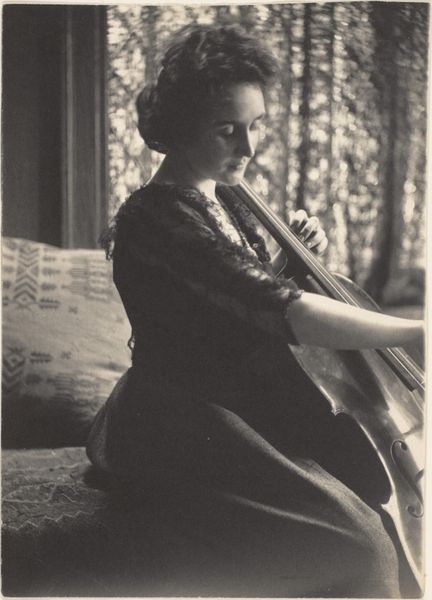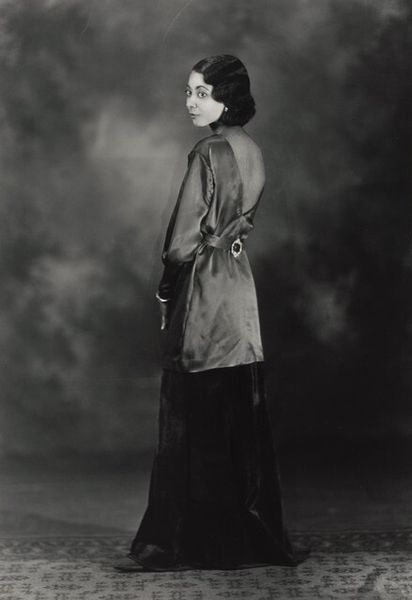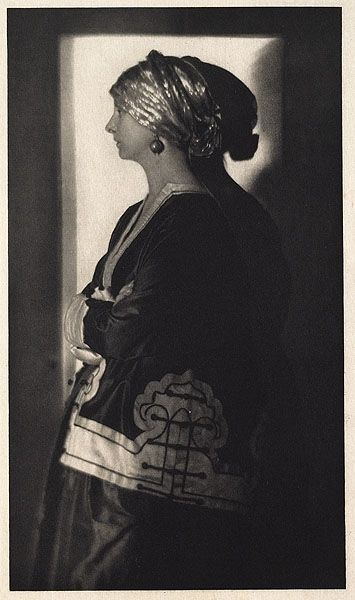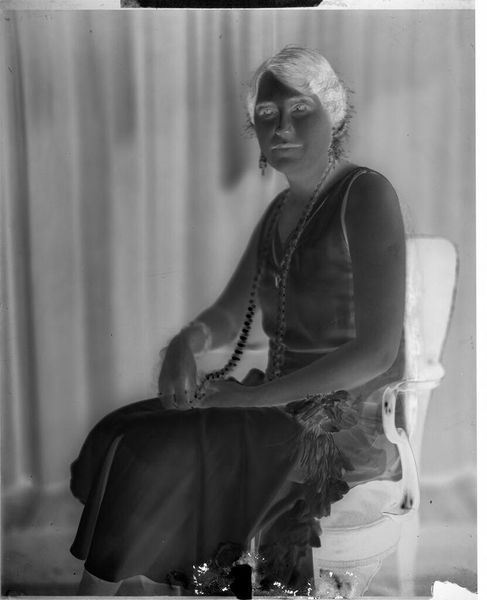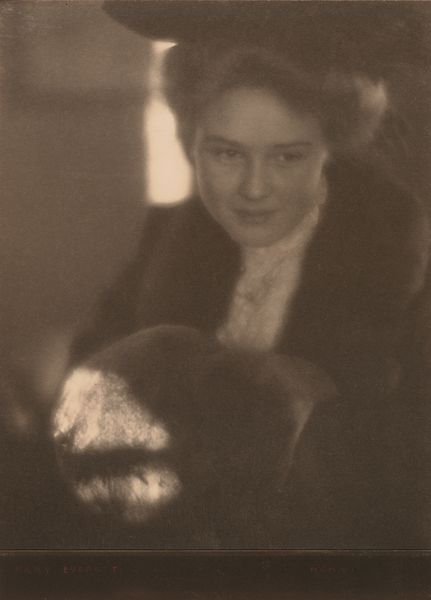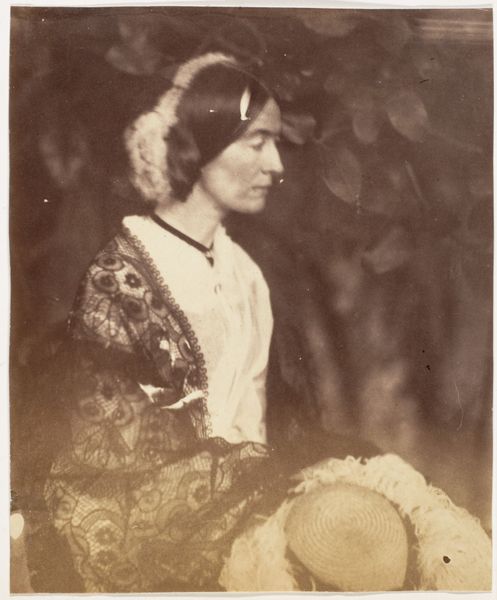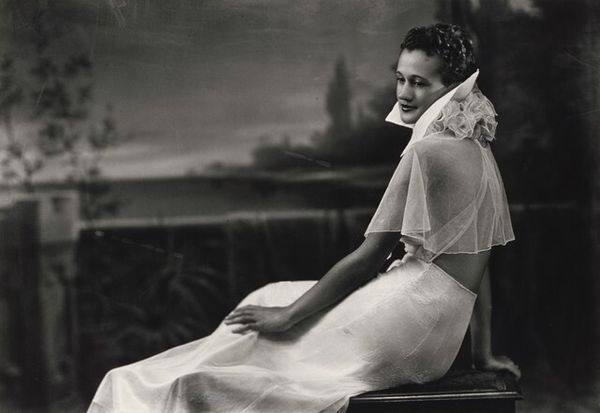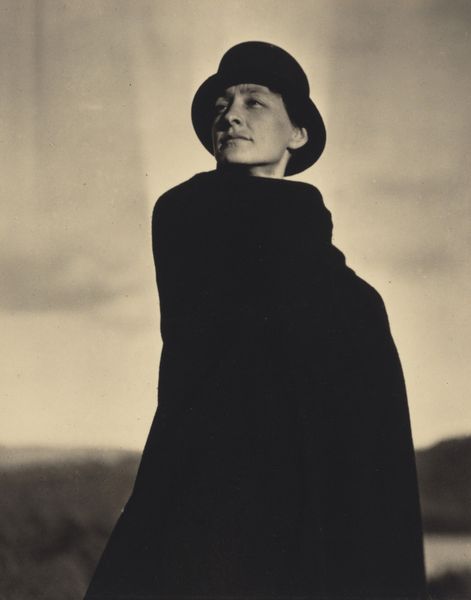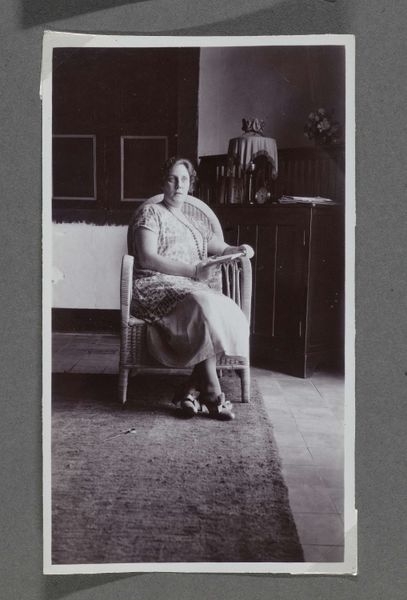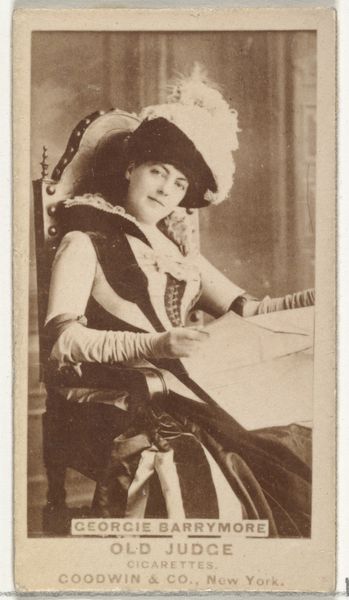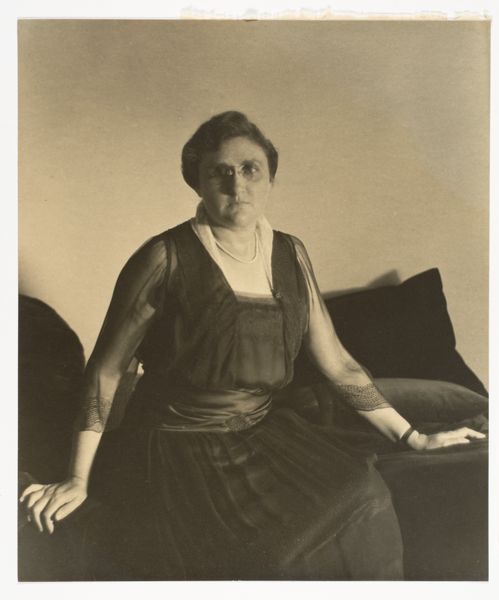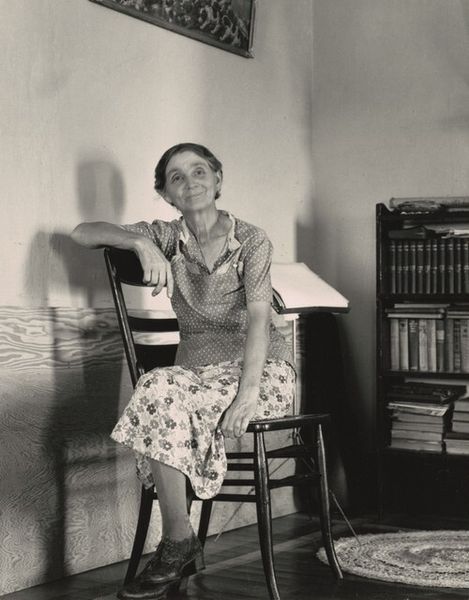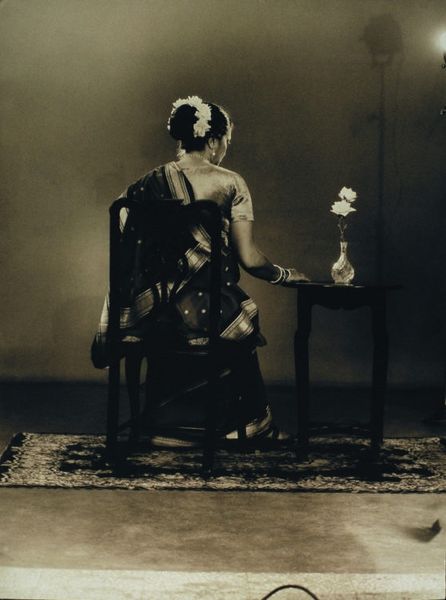
photography, gelatin-silver-print
#
portrait
#
pictorialism
#
photography
#
black and white theme
#
black and white
#
gelatin-silver-print
#
modernism
Dimensions: sheet (trimmed to image): 19.1 x 15.5 cm (7 1/2 x 6 1/8 in.) mount: 35.2 x 27.6 cm (13 7/8 x 10 7/8 in.)
Copyright: National Gallery of Art: CC0 1.0
Editor: This gelatin silver print is called "Mrs. Stieffel," attributed to Alfred Stieglitz, and its date is sometime between 1900 and 1934. It’s a rather subdued portrait with this amazing black-and-white tonality, but I am not quite sure of what's going on in this picture. How do you interpret this work? Curator: Well, considering Stieglitz’s involvement in both pictorialism and modernism, this image presents an interesting tension. What strikes me is how this intimate domestic scene, a woman knitting, becomes a powerful statement about women's roles at the turn of the century, specifically when thinking about the burgeoning suffrage movement. Do you notice how the softness of the focus, characteristic of pictorialism, seems to subtly veil the sitter, perhaps hinting at societal expectations placed on women? Editor: That's an interesting point! It hadn't occurred to me to view it through that lens. I was so focused on the knitting as this simple, homely activity. Curator: Exactly! But think about it – what does it mean to capture a woman engaged in traditionally "feminine" work, through a photographic style associated with artistic expression and challenge preconceived notions about gender roles. The picture quietly elevates everyday labor, subtly questioning those roles even while portraying them. Do you see that connection to later feminist art movements? Editor: I do now. It's almost like the act of photographing her, giving her this artistic attention, is itself a statement. I always considered it to be about photography itself. I did not see how women's role in society in the United States and how Stieglitz would express an idea about gender identity, and politics using photography. Curator: And Stieglitz, consciously or unconsciously, engages with those power dynamics through the act of observation and documentation. Hopefully, looking closely and posing critical questions about how identity is represented and understood, opens up more insights. Editor: Definitely, and I think I need to knit that information into my understanding of Stieglitz. Thanks!
Comments
No comments
Be the first to comment and join the conversation on the ultimate creative platform.
